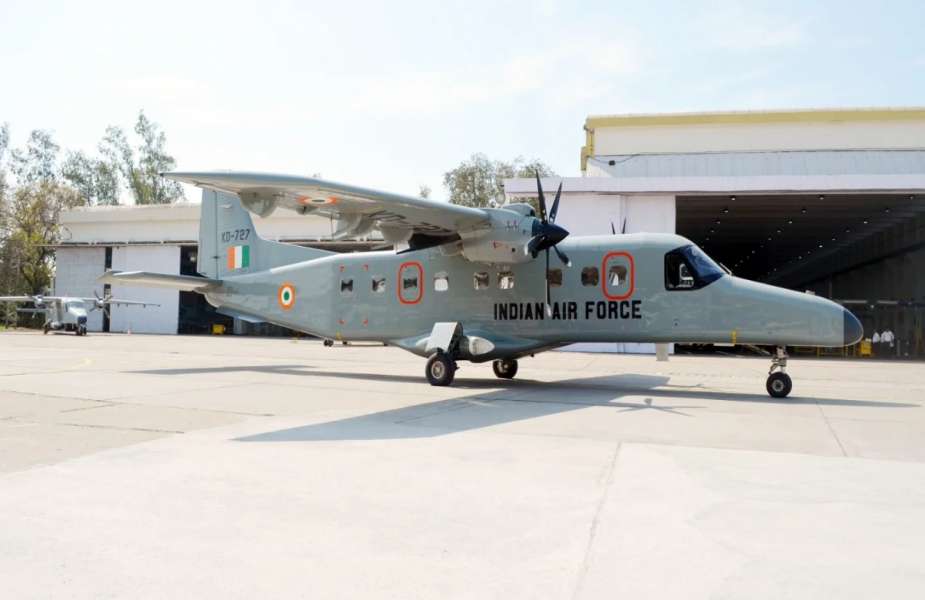Breaking news
India signs two major contracts to modernize Dornier 228 multirole aircraft fleet.
In March 2024, the Indian Ministry of Defence decided to strengthen its aerial fleet by signing two major contracts with Hindustan Aeronautics Limited (HAL), thereby enhancing the capabilities of both the Indian Air Force (IAF) and the Indian Navy. The first agreement, valued at $81.47 million (approximately Rs 6.67 billion), involves the supply of an additional six Dornier Do-228 aircraft to the IAF. The second contract, amounting to Rs 2,890 crores, is for the Mid-Life Upgrade (MLU) of 25 Dornier aircraft owned by the Indian Navy. These initiatives highlight India's commitment to modernizing its forces and achieving self-reliance in defense production.
Follow Air Recognition on Google News at this link
 Indian Dornier-228 multirole aircraft (Picture source: India MoD)
Indian Dornier-228 multirole aircraft (Picture source: India MoD)
Announced on March 10, 2024, the contract between the Ministry of Defence and HAL stipulates the delivery of six Dornier Do-228s to the IAF. These aircraft are specially designed for operation from short or semi-prepared runways, ideal for hard-to-access regions like island chains and the Northeast of India. Each aircraft will be equipped with improved engines and a five-blade composite propeller, offering better energy efficiency and enhanced performance. These technical features allow the Dornier Do-228 to excel in short-distance operations while maintaining a significant payload capacity.
On March 15, 2024, a second contract was signed for the mid-life upgrade of 25 Indian Navy Dornier Aircraft, with an investment of Rs 2,890 crores. This mid-life upgrade encompasses the installation of advanced avionics systems and primary role sensors, aiming to strengthen the aircraft's capabilities in maritime and coastal surveillance, electronic intelligence gathering, and the development of maritime situational awareness. Additionally, this modernization will enable the aircraft to fulfill essential secondary functions such as search and rescue, medical evacuation, and communication link. The focus on using indigenous components as part of this upgrade underscores India's commitment to self-reliance in the defense sector, in line with the "Make in India" initiative.
The modernized versions of the Dornier 228, particularly relaunched as the Dornier 228 NG (Next Generation), feature significantly improved characteristics compared to their predecessor. Among over 350 design modifications, one of the most notable is the adoption of Universal's UNS-1 glass cockpit, allowing for flight under instrument flight rules (IFR) with a single pilot, in addition to visual flight rules (VFR) – a first in its category according to RUAG Aviation. The cockpit is equipped with four large screens, including two primary flight displays and two multifunction displays, which present all essential flight data. The navigation system is comprehensive, including VHF Omnidirectional Range (VOR), Distance Measuring Equipment (DME), Automatic Direction Finder (ADF), radar altimeter, Global Positioning System (GPS), air data computer, and a flight management system. Although designed for two-pilot operation, the aircraft can be flown by a single pilot thanks to these advancements. Options such as a three-axis autopilot, weather radar, and HF radio are also available.
Other significant improvements include the Garrett TPE331-10 engines, optimized to work with the new five-bladed composite propellers, which are more efficient, quicker to start, and produce considerably less vibration and noise than the original metal four-bladed predecessors. Thanks to these engines, the Dornier 228 NG offers the longest time between overhauls (TBO) for any 19-seat aircraft, reaching up to 7,000 hours. For safety, an engine-indicating and crew-alerting system (EICAS) is installed, with the option to add other safety equipment akin to much larger passenger aircraft, including an airborne collision avoidance system (ACAS) and a terrain awareness and warning system (TAWS). At 8,000 feet in clean configuration, the 228 NG burns 360 pounds (about 160 kg) of fuel per hour at a cruise speed of 120 knots (about 220 km/h), highlighting its operational efficiency.


























